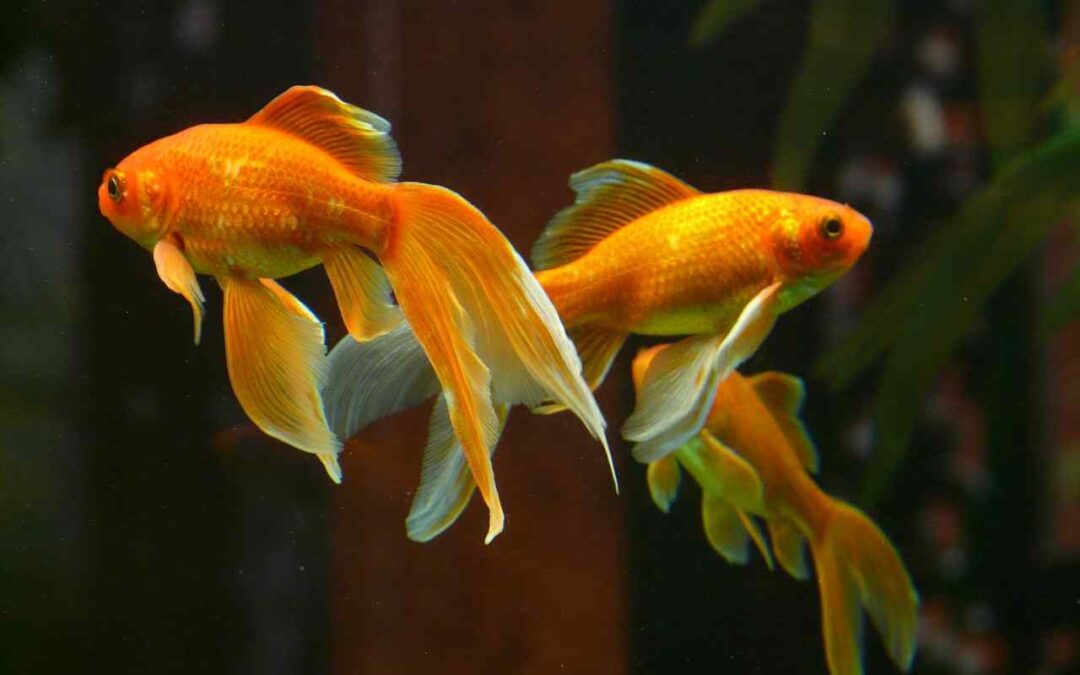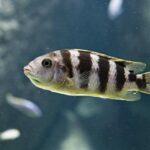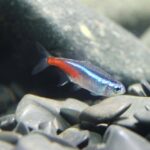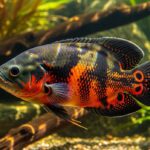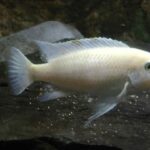When most people think of a goldfish, they imagine a small orange fish swimming in circles inside a glass bowl. It’s an image that’s been passed down through movies, cartoons, and even school fairs where goldfish are often handed out as prizes. While it might look cute, that picture doesn’t reflect reality. Goldfish aren’t simple “starter pets” meant to survive in tiny bowls. They’re intelligent, social animals that need far more care and space than most people realize.
Goldfish actually have unique personalities. They learn daily routines, recognize the people who feed them, and even interact with their surroundings in playful ways. Many owners are surprised to discover their goldfish eagerly swimming to the front of the tank when they walk into the room, almost as if they’re greeting them. They aren’t just decorative fish—they can become interactive companions.
What’s even more remarkable is how long they can live. Many assume goldfish only last a year or two, but with proper care they can live 10 to 20 years—and in some cases over 40 years. That means a goldfish could stay with a family for decades, sometimes outliving cats and dogs.
Of course, reaching that kind of lifespan depends on giving them the right environment. Goldfish need large, well-filtered tanks, regular water changes, and a healthy, varied diet. They reward consistent care with vibrant health and engaging behavior, but they aren’t the low-maintenance pets people often believe them to be.
In the end, goldfish are far more than the little orange prize in a plastic bag. With the right attention, they’re graceful, curious, and long-lived companions—one of the most underestimated yet rewarding pets you could ever keep.
Let’s break down what it really takes to keep goldfish as happy, healthy pets.
Goldfish Tank Size and Setup
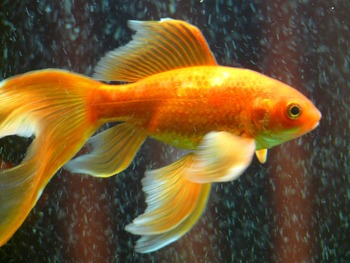
Why Goldfish Don’t Belong in Bowls
One of the most common misconceptions about goldfish is that they’re happy in small bowls. Unfortunately, bowls are far too small and don’t provide enough surface area for proper oxygen exchange.
Goldfish are also messy eaters that produce a lot of waste, which quickly pollutes the water in such confined spaces. Ammonia builds up, oxygen runs low, and the fish ends up living in poor conditions that drastically shorten its lifespan.
The truth is simple: a bowl is not a suitable home for a goldfish.
Choosing the Right Tank Size
A single goldfish needs at least 20 gallons of space, and for every additional fish, you’ll want to add another 10–20 gallons. That may sound like a lot, but goldfish can grow much larger than most people expect—some reaching 8–12 inches long.
Giving them room to swim isn’t just about comfort; it’s about survival. A properly sized tank helps maintain water quality, supports good health, and allows your goldfish to grow to its natural size.
Filtration and Water Quality
Goldfish are notorious for the amount of waste they produce, which makes a powerful filter a must. Ideally, your filter should be rated for a tank even larger than the one you have to keep up with the workload.
Before adding fish, the tank needs to be cycled—a process that establishes beneficial bacteria to break down harmful waste products like ammonia and nitrites. Skipping this step often leads to sick or stressed fish.
When it comes to water quality, aim for a pH between 7.0 and 7.8. Regular testing is important, as it helps catch problems early before they harm your fish.
Tank Setup and Decorations
Decorations make your tank visually appealing, but safety comes first. Avoid sharp or rough objects that could injure delicate fins.
Smooth rocks, silk plants, and rounded ornaments are great choices. Fancy goldfish with flowing fins or large eyes are especially vulnerable, so choose décor that’s gentle and safe.
Feeding Goldfish the Right Way
Goldfish are omnivores, which means they eat both plant and animal matter. But not all foods are created equal, and their diet has a big impact on their health.
Staple Diet
The best staple diet for goldfish includes high-quality pellets or flakes specifically formulated for them. These foods contain balanced nutrients and are designed to float or sink slowly, making it easier for goldfish to eat.
Fresh and Plant-Based Foods
To mimic their natural grazing habits, supplement their diet with blanched vegetables like peas, spinach, or zucchini. Foods containing spirulina or algae flakes are also excellent for digestion and coloration.
Treats in Moderation
Frozen or freeze-dried treats such as brine shrimp or bloodworms can be offered occasionally. These provide extra protein but shouldn’t replace their regular meals.
Feeding Tips
- Avoid overfeeding: Goldfish are eager eaters, but excess food leads to bloating and dirty water.
- Soak dry food: Pre-soaking pellets or flakes prevents them from expanding in the fish’s stomach, reducing digestive problems.
- Feed small portions: Offering food once or twice a day in small amounts is better than large meals.
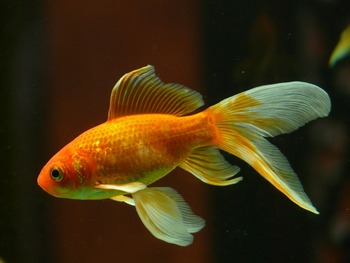
Maintaining a Healthy Goldfish Tank
Owning goldfish comes with a maintenance commitment. Because they produce a lot of waste, their tanks need more frequent attention compared to other freshwater fish.
Water Changes
Regular partial water changes are crucial. Depending on tank size and stocking levels, you may need to replace 30–50% of the water weekly—sometimes even more often.
Water Testing
Using a reliable water testing kit helps you stay on top of ammonia, nitrite, and nitrate levels. Spikes in these compounds are harmful, so consistent testing is key.
Daily Care
Goldfish are interactive and observant, so daily check-ins help ensure they’re eating well and behaving normally. Any changes in appetite, swimming patterns, or appearance can be early warning signs of illness.
Social Needs and Tankmates
Goldfish aren’t loners; they’re gregarious creatures that benefit from the company of others. Watching them interact can be one of the joys of keeping them.
Goldfish Companionship
It’s best to keep goldfish in groups, provided the tank size can support multiple fish. They’re more active and engaged when housed together.
Choosing Tankmates
Goldfish do best with other goldfish or fish that tolerate cooler water. Avoid fast or aggressive species like barbs or tropical fish that require warmer conditions. Fancy goldfish, in particular, are slow swimmers and can be bullied by nippy fish.
Extra Care Considerations
Beyond the basics, there are some finer points to goldfish care that often go overlooked. For instance, lighting plays a role in maintaining their natural rhythm—too much light can stress them, while too little can affect their health and coloration. A balanced light cycle, such as 10–12 hours of light followed by darkness, mimics a natural day and night cycle.
It’s also important to think about enrichment. Goldfish are curious and intelligent, so adding safe objects to explore, rearranging tank decor occasionally, or even hand-feeding them provides mental stimulation. This prevents boredom and encourages natural behaviors.
Another factor to consider is variety among goldfish breeds. From streamlined commons to round-bodied fancies like orandas and ryukins, each has slightly different needs. Fancy varieties are more delicate and prone to swim bladder issues, while commons and comets are hardier but need even more swimming space. Knowing the specific needs of your chosen type helps you provide the right care.
Why Goldfish Are Worth the Effort
Despite their care needs, goldfish are among the most rewarding pets you can own. They recognize their owners, can be hand-fed, and even learn to respond to feeding cues. Their bright colors and graceful movements add life to any room, and with proper care, they can be lifelong companions rather than short-term pets.
Goldfish also teach patience and responsibility, as keeping them requires regular effort. For families, this can make them excellent “teaching pets” that help children learn the importance of daily care and respect for animals.
Common Goldfish Mistakes to Avoid
- Using a bowl or small tank: Always start with at least 20 gallons.
- Skipping filtration: Goldfish need powerful filters to stay healthy.
- Overfeeding: Too much food harms both the fish and the tank.
- Neglecting water changes: Clean water is vital for long-term health.
- Mixing with incompatible fish: Not all species make safe tankmates.
Fun and Interesting Facts About Goldfish
Goldfish aren’t just beautiful—they’re full of surprises. Here are some fun tidbits that many people don’t know about these popular pets:
- They have impressive memories. Forget the old myth about goldfish only remembering things for three seconds. Research shows they can remember routines, feeding times, and even their owner’s face for months.
- Goldfish can be trained. With patience, they can learn tricks like swimming through hoops, pushing floating balls, or even following your finger. Their curiosity and intelligence make them far more interactive than most people expect.
- They come in hundreds of varieties. From long-bodied commons to round, fancy types like orandas, ryukins, and ranchus, goldfish have been bred for centuries into diverse shapes, sizes, and colors.
- Color changes are common. A goldfish’s color may shift over time due to genetics, age, or light exposure. Some goldfish even turn white as they mature.
- They’ve been around for a long time. Goldfish were first domesticated in China more than a thousand years ago. They’re among the oldest domesticated fish species in the world.
- They can grow very large. In the right conditions, goldfish can grow over a foot long. The largest recorded pet goldfish measured a whopping 18 inches!
These little facts remind us that goldfish are more than just pretty pets—they’re fascinating animals with unique personalities and histories.
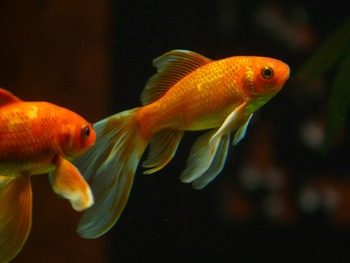
FAQs About Goldfish as Pets
1. How long do goldfish live?
With proper care, goldfish can live 10–20 years, and some have been recorded at over 40 years old.
2. Can goldfish live in a bowl?
No. Bowls are too small, lack filtration, and don’t allow for proper oxygen exchange. Goldfish in bowls rarely survive long.
3. How big do goldfish get?
Common goldfish can reach 8–12 inches, while fancy varieties often grow 6–8 inches depending on the environment.
4. Do goldfish need a heater?
Goldfish are cold-water fish and typically don’t require heaters. However, stable temperatures (65–75°F) are ideal.
5. How often should I feed my goldfish?
Feed small amounts once or twice daily. Only provide what they can finish in 2–3 minutes.
6. Can goldfish recognize their owners?
Yes! Goldfish are intelligent and can learn to recognize their keepers, often swimming to the front of the tank during feeding time.
7. Do goldfish need companions?
They thrive in groups. If you have the space, keeping multiple goldfish together can make them more active and social.
Final Thoughts
Goldfish are often underestimated, but they’re far more than decorative fish in a bowl. They’re intelligent, interactive, and capable of forming bonds with their keepers. However, they demand a larger commitment than many people expect—big tanks, powerful filters, specialized diets, and consistent maintenance are all part of the package.
If you’re willing to put in the effort, though, you’ll be rewarded with a bright, graceful, and surprisingly affectionate pet that can be part of your life for many years to come.

